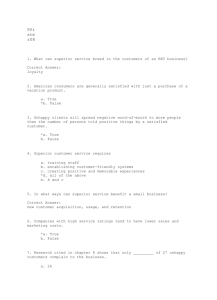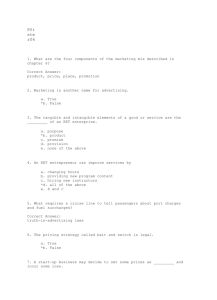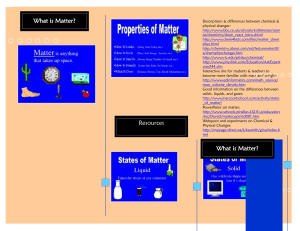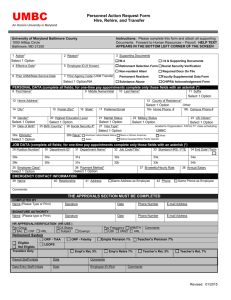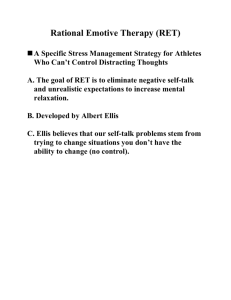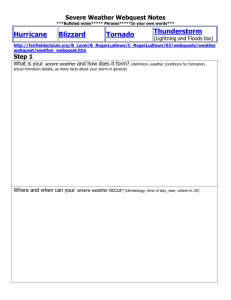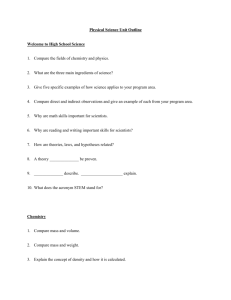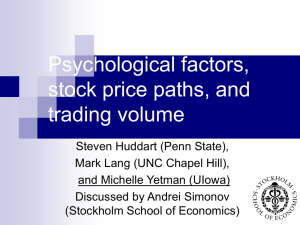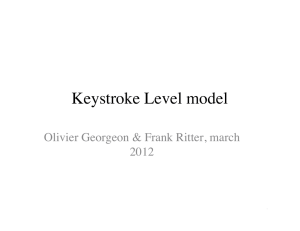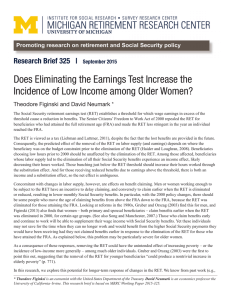View curriculum project as a presentation
advertisement
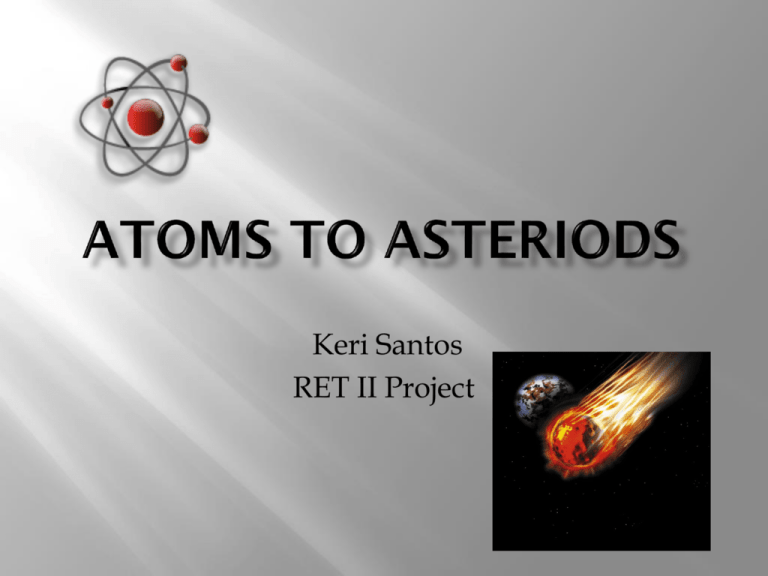
Keri Santos RET II Project RET 1 inspired my lessons for RET 2 through the following experiences: Ability to work in the Materials Research Lab Synthesizing a high temperature superconductor Creating a magnetic track in which the superconductor can levitate and move with stability Developing a vehicle (styrofoam car!) that housed the superconductor allowing it to travel along the track Being able to share the final project with my class! It was this Real Science Experience from RET I that inspired the creation of these lessons I created lessons that will hopefully let my students feel like they are part of a Real Science Experience along with adding activities that were fun! My Ret II project focuses on chemistry for 8th grade students. I plan to start with the smallest particle and build until we are focusing on some of the largest known bodies in the universe. (Atoms to Asteroids) These lessons are aligned with the California State Standards and are to be used along with my current curriculum. Divide interactive lessons evenly between computer and classroom activities Include at least one lab, game, and hands-on activity for each chapter. Incorporate lessons and games into my curriculum that will excite even the most unmotivated student. Labs • Stimulates higher level thinking • Students practice the scientific method • They feel like they are doing “real” science Hands-on Activities • ELL Students • Kinesthetic Learners • Tactile Students Games • Competition leads to motivated students • Stimulates learning • Fun!! This project will cover approximately the first half of the school year Assess the project by using: Student performance on each individual lesson (worksheets, models they developed, game scores, project grades, etc) Comparing student test scores from previous years Student’s excitement about the new activities Feedback from students Each lesson has a Teacher Guide which includes: CA State Standards Content that students should know before lesson (vocab, concepts, etc.) Approximate time for the lesson Materials needed Answers to student worksheet Possible extensions, troubleshooting help I will be adding more to the TG as I try them in my class this year Larger lessons (projects) include a rubric RET II Overview of Lessons Atomic Theory Timeline :students research and create a timeline for the development of the atomic theory What’s your state?: students model the motion of atoms in different states of matter with balloons Mystery Bag: students try to guess the mystery objects in a bag based on their physical characteristics Penny Activity: students separate copper from zinc using physical and chemical means Solid + Liquid =Gas: demonstration involving the combination of a solid and liquid to produce a gas Adopt –an-Element: students choose an element to research and then build a model out of various materials Messing with Mixtures: students work with edible materials to learn about solutions, colloids, and calculating percentages of mixtures Covalent Marshmallows: students build models of covalent molecules using marshmallows and toothpicks Reaction in Action: students take the mass of materials before and after a reaction and apply it the Law of Conservation of Mass Fireworks Lab: students research elements involved in fireworks, they then hypothesize which elements are present in samples that you burn in class Fireworks Lab TG Firework Lab Salt vs. Sugar: students try to deduce which contains ionic and covalent bonds by observing and heating the materials Scale Model of our Solar System: students choose appropriate sized objects to represent our sun, moon and the different planets, then distance them from the sun on an open field using a scale reference Atomic Structure Webquest: students visit a few sites and find answers to questions Matterville Webquest: students visit websites to find answers to questions about the different states of matter Adopt –an- Element: (research of adopted element) Fireworks Lab: (research of elements for classroom act) Solar System Webquest: students search for answers about our solar system Material Science Smackdown: students learn about the different properties of elements, what they can be transformed into, and uses -Strange Matter Alien Juice Bar-students learn the pH’s of certain materials while opening their own juice bar for aliens Chemical Mix-up-students have to separate elements, compounds, and mixtures into their correct categories To Bond or not to Bond-students must make a “chem” connection with elements that are capable of bonding with each other Periodic Puzzler-students are contestants on a game show trying to guess Matter Card Game: similar to go fish, students turn over cards to find matches to their state of matter Connect 4: students have different game sheets, they will turn-over clues and try to connect 4 on their sheet Element Bingo: students fill out bingo sheets with element symbols, teacher gives clues about element Space Rocks Game: students answer questions about space rocks in order to advance on a game sheet in hopes of becoming a discovered meteorite Martina Michenfelder Frank Kinnaman NSF UCSB and all of the MRL staff
